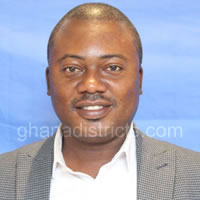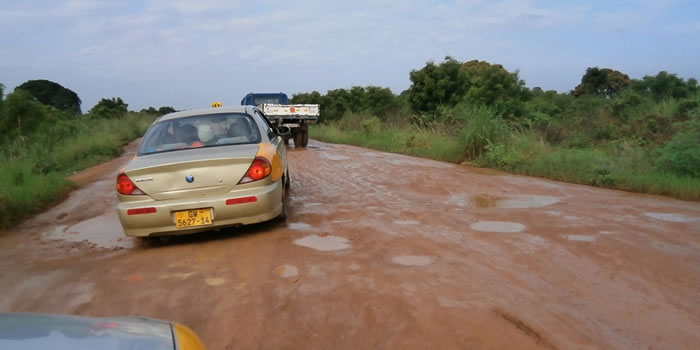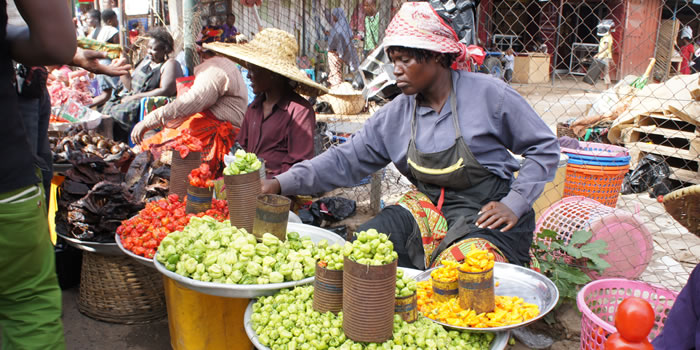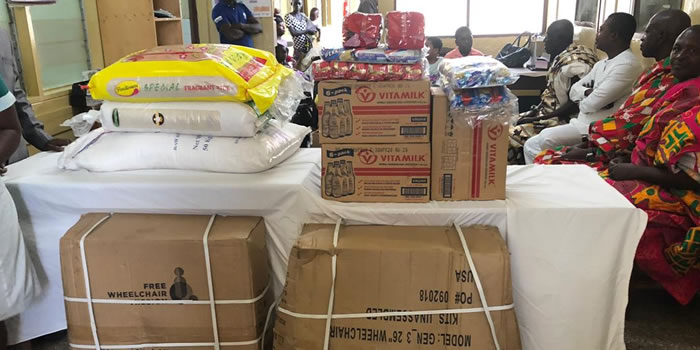

Aesthetic Features
The Municipality has a lot of sites of historical, scientific and aesthetic importance which have the potential of serving as tourist attractions. These tourist sites include Kyiriyawa and Onyemso Waterfalls, Juansa and Agogo Shrines. The presence of the aesthetic features in the Municipality is a potential to the Assembly and the Assembly should place it high on its development agenda and invest them to serve as tourist attraction to provide income and create employment for the Assembly
Communication
The Municipality has two post offices at the Municipal capital Agogo and Juansa. Access to post office facilities is much lower in the rural communities. Survey by Ghana Statistical Service in 2003 (CWIQ) showed that about 80% of urban households are within half an hour’s travel to the Post office. This contrasts with 53% of rural households.
Banks
The Municipality has one Commercial bank in Agogo and three Rural banks in Agogo and Juansa. There are other micro-financing companies operating in the Municipality. Notably among them are Adepa and Royal Winners Micro Finance. These institutions offer advice, mobilise savings and provide credit to farmers and small scale entrepreneurs.
Hotels / Guest House
There is one hotel (Kusibo) and other several guest houses in the Municipality. The hotels and guest houses are located particularly in the Municipal capital Agogo.
Cooking Fuel
Wood is the main energy source for cooking. It can be observed from Table 1.5 that, 54.6 percent of household use wood as the main source of cooking fuel, followed by charcoal 28.1 percent, gas 8.2 percent. Continued dependence on this source encourages land degradation and deforestation as many trees are felled and soil eroded and made infertile thus resulting in low crop yields.
Infrastructure and Services
Road Network
The Municipality has 171.97km of feeder roads and ……km of tarred roads. The tarred roads are: Juansa- Agogo, Agogo-Juansa- Dome and Akutuase Junction- Wioso. The feeder roads are described in terms of length in kilometers and condition in Table 1.6.
Energy
Majority of households (57.7%) use electricity (mains) as their main source of lighting. This is followed by flashlight/ torch (28.6%) and kerosene lamp (1.8%). All the other sources of lighting put together covers less than 2 percent of the total lighting used by households for dwelling units. The electricity is concentrated in the Southern part of the Municipality while the Northern part of the district lacks electricity. The availability of electricity has promoted cottage industries in the southern sector.
Information Communication Technology (ICT)
The importance of ICT to the development of the district economy cannot be over emphasized. It has contributed greatly to the development of human capital and hence increased productivity. Besides this, it allows businessmen and private investors to communicate easily. Thus, reducing cost of doing business and making t6he district attractive to other investors.
As shown in Table 1.19, 42.1 percent of the population aged 12 years and older in the Municipality own mobile phones which is lower than the regional value of 56.1 percent. The pattern in the table shows that males in the Municipality are more likely to own mobile phones than their female counterparts. It also shows that access to and usage of internet facilities in the Municipality is relatively low since only 3.6 percent of the population 12 years and older have access to and usage of the internet.
Usage of the internet is affected by factors such as education, availability of power (i.e. 57.7% of the district has access to electricity) and accessibility to network. A greater chunk of the district’s population live in the rural areas and considering the fact that network service would probably not be easily accessible; the use of the internet will definitely be low.
As shown in Table 1.20, a total number of 15,480 households are recorded in the Municipality, of which only less than one percent (0.8%) have fixed telephone lines. This is very low compared to the regional value of 2.3 percent. This may be attributed to the emergence and dominance of mobile phone devices which have relegated the use of fixed telephone lines to a small portion of the population.
Information from the table indicates that out of the total number of households in the district, only 4.7 percent owns desktop computers or laptop which is lower than the regional percentage proportion (9.3%).
Date Created : 11/21/2017 4:35:08 AM












 facebook
facebook
 twitter
twitter
 Youtube
Youtube
 +233 593 831 280
+233 593 831 280 0800 430 430
0800 430 430 GPS: GE-231-4383
GPS: GE-231-4383 info@ghanadistricts.com
info@ghanadistricts.com Box GP1044, Accra, Ghana
Box GP1044, Accra, Ghana